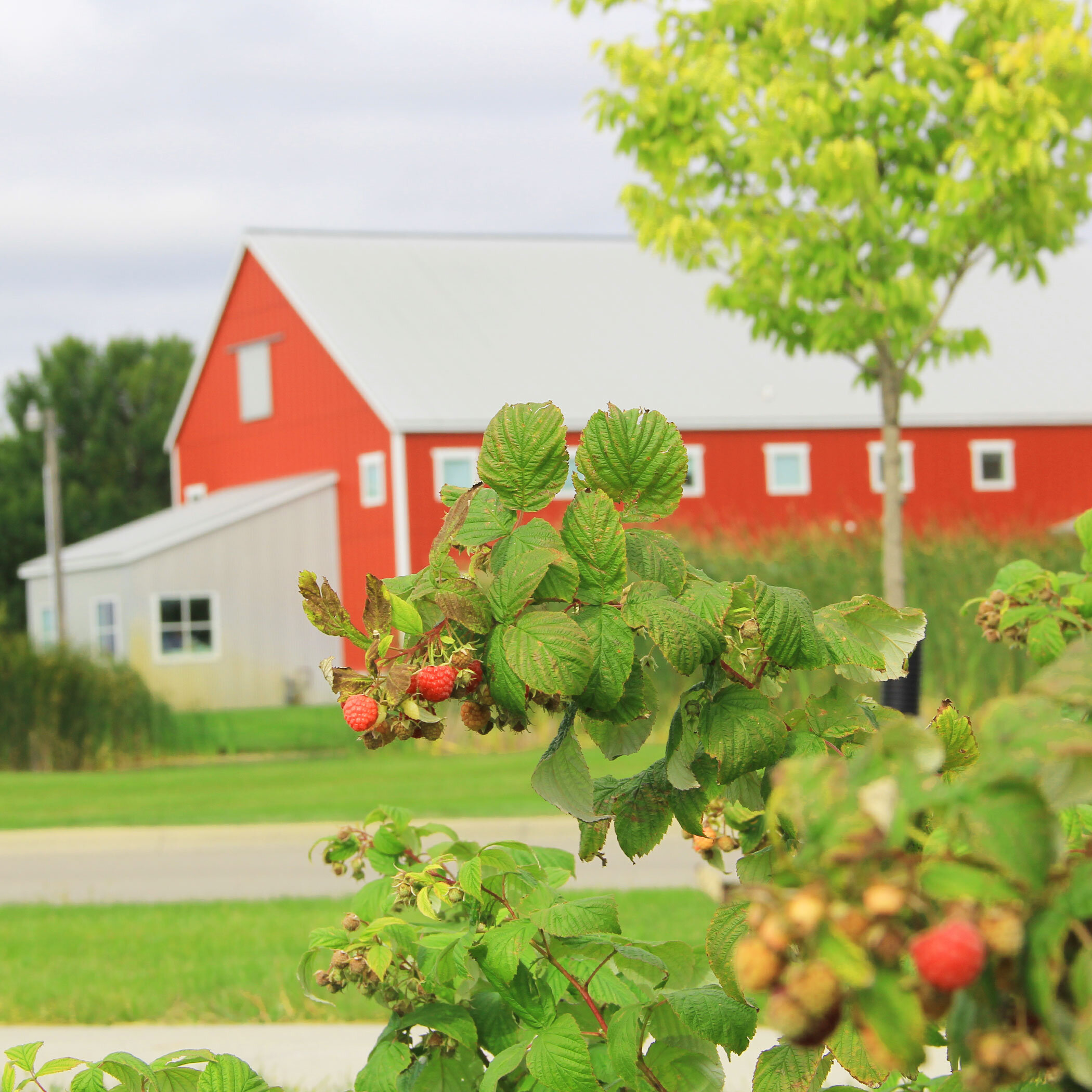Interpretive Pocket Park:
Berry Patch
Strawberry
Honeoye, Wendy, Hecker, and Ft. Laramie are the varieties of strawberries planted within this row. Except for the Hecker, all other types are June bearing. Strawberries need full sun to produce maximum fruit, and space plants 12 to 18 inches apart. While self-fertile, they do require bees for pollination. The first flowers should be removed for a few weeks after planting to allow for root establishment, then they can be picked later in the summer.
Souris Raspberry
Rubus idaeus 'Souris' - Souris Raspberry
This summer bearing raspberry was developed by Morden Arboretum and is an ideal selection for prairie climate and soil types. Once planted, production can reach into the 10th year. A suckering, self-pollinating variety, it will heavily bear bright red fruits and will be a strong attractant for the local bird population.
Killarney Raspberry
Rubus 'Killarney' - Killarney Raspberry
A very popular July bearing raspberry which is a cold hardy species discovered in Canada in 1961. The red fruit is easily harvestable, and holds shape for up to a week with careful handling and under controlled refrigeration. While delicious freshly consumed, it also makes fantastic pies. Raspberries have biennial canes, and perennial crowns and roots, being vegetative the first year of planting, and bearing fruit the following summer.
Plum
Prunus 'Toka' - Pipestone Plum
Toka plum trees can get to 20' to 25' in height, and produce a heavy crop of delicious fruit in late August to early September. The sweet flesh is pinkish, giving rise to the other name often given; the Bubblegum plum. Many homeowners use this plum as part of their landscape accent in the early spring with the showy white flowers.
Serviceberry
‘Autumn Brilliance’ Serviceberry
This underappreciated, multi-stemmed, small tree is often called the “poor man’s” blueberry since the real blueberry species cannot successfully grow in North Dakota’s alkaline soils and brutally low winter temperatures. White, perfect flowers in early spring, blueberry type fruits that are delicious eaten fresh or in pies, and striking autumn foliage color.
Chokeberry
Aronia Melanocarpa 'Morton' Iroquois Beauty Black Chokeberry
A versatile shrub getting about 4' tall, with a suckering characteristic that makes it ideal for massed plantings and naturalized settings. Three seasonal showings with showy flowers, dark edible fruits, and showy fall foliage. Adaptable to boggy or dry areas. Fruit is valued when ripe, if one can get to it before the birds, for making wines and jellies.







